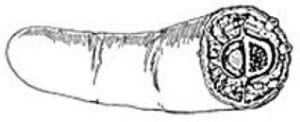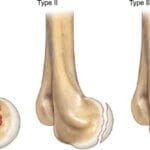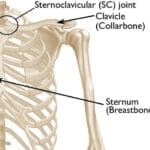Replantation is a complex surgical procedure aimed at reattaching a body part—such as a finger, hand, or toe—that has been completely severed from the body. The primary objective of replantation is to restore as much function as possible to the injured area.
In some instances, replanting the lost body part may not be feasible due to various factors. When reattachment is not an option, the patient may need to consider using a prosthesis, an artificial device that serves as a replacement for the missing limb or digit. In certain cases, a prosthesis can significantly improve the individual’s function and quality of life.
Replantation is typically recommended when the expected function of the reattached part would be at least comparable to that of a prosthesis. For example, surgeons may opt against reattaching an index finger if the outcome is likely to result in stiffness, pain, or numbness, which could hinder the movement of other fingers. However, reattaching a thumb is often prioritized, given its crucial role in hand function, as it may provide superior benefits compared to a prosthesis if the surgery is successful.
Before the procedure, the surgeon will discuss the anticipated level of function that can be achieved with replantation. It is essential for the patient or their family to weigh the potential benefits against the extensive surgery, hospital stay, and long-term rehabilitation that may follow.
Since replantation is a time-sensitive intervention, decisions need to be made swiftly. Although often portrayed in popular media as a routine procedure, replantation is highly specialized and performed in select medical centers. Furthermore, despite a patient’s desire for reattachment, it may not always be a viable option.
“Steps and Recovery in the Replantation Procedure: What to Expect”
Procedure Overview
Replantation involves a series of detailed steps that usually span several hours to complete:
- Tissue Preparation: Initially, the surgeon meticulously removes damaged or contaminated tissue from both the severed part and the stump.
- Bone Trimming: The ends of the bones are trimmed before being realigned to facilitate the reattachment of surrounding soft tissues.
- Repairing Tendons and Muscles: The surgeon then reconstructs the tendons and muscles, optimizing them for early movement during the patient’s recovery phase.
- Microsurgical Vascular and Nerve Repair: Arteries, veins, and nerves are reattached using microsurgery, often the most intricate part of the procedure. The condition of the blood vessels plays a crucial role in the success of the replantation, as severe damage from the injury may impair blood flow, leading to failure. If the quality of the vessels is questionable, the surgeon may advise against proceeding.
- Skin Closure and Tissue Grafting: The skin is closed loosely to avoid pressure on the repaired vessels. In some cases, additional skin or tissue may be taken from other areas of the body to cover exposed sections, either during the procedure or in subsequent surgeries.
Post-Surgery Recovery
Following a successful replantation, patients typically remain in the hospital for at least one week to closely monitor the healing process:
- Monitoring the Replanted Part: The reattached part is observed carefully to ensure it remains viable, with attention given to signs of adequate blood flow.
- Managing Blood Loss: Due to significant blood loss that can occur during the injury, surgery, and recovery phases, blood transfusions may be necessary.
- Blood Thinners and Clot Prevention: Patients are usually prescribed blood thinners to prevent clotting in the newly repaired vessels.
- Daily Blood Tests: Regular blood tests are conducted to monitor safe blood levels.
- Environmental Considerations: The recovery room is kept warm to prevent vascular spasms, and patients are advised to avoid caffeine and other substances that may constrict blood vessels.
- Elevation and Leeches: The affected limb is kept elevated to promote proper blood drainage. If venous drainage is insufficient, leeches may be applied to help draw out old blood, ensuring fresh, oxygenated blood can flow into the area.
Rehabilitation and Nerve Recovery
Once the replanted part shows signs of stability, rehabilitation begins to prevent scar tissue formation and restore movement:
- Nerve Healing: The return of function depends on the regeneration of sensory and motor nerves. Sensory nerves transmit signals related to pain, temperature, and pressure, while motor nerves control muscle movements.
- Rate of Nerve Regrowth: Nerves typically grow at a rate of about 1 inch per month, allowing doctors to estimate the recovery time based on the distance from the injury site.
- Differences in Finger vs. Hand Replantation: For finger replantation, sensory nerve recovery is the focus since the muscles controlling finger movements are located in the hand and forearm. In hand or arm replantation, motor nerve recovery is also necessary to restore movement in the hand, wrist, or elbow.
Although some sensation and motor function may be regained, replanted limbs rarely recover to their pre-injury state, and the functionality will likely be reduced compared to before the amputation.
“Physical Therapy and Rehabilitation: Essential Steps for
Replantation Recovery”
The Rehabilitation Journey
Healing from replantation involves much more than just recovering from the initial injury and surgery. Rehabilitation is a long-term commitment, with physical therapy and temporary bracing playing vital roles in regaining function.
- Use of Braces: Braces are applied early on to safeguard the repaired tendons while still allowing some movement of the reattached limb.
- Physical Therapy Exercises: Rehabilitation exercises help prevent joint stiffness, keep muscles active, and reduce scar tissue formation.
Even with full recovery, some limitations may persist, preventing patients from resuming all previous activities. Custom devices can assist in performing certain hobbies or tasks, and healthcare professionals can provide guidance on these adaptive tools.
Returning to Work
Many individuals can go back to their pre-injury jobs, though some may need to explore different types of work. Support is available for patients needing help in choosing a new career path.
Patient Involvement in Recovery
Active participation in the recovery process is crucial and demands significant mental resilience. Lifestyle adjustments may also be necessary; for instance, smoking cessation is advised, as smoking impairs circulation and can hinder blood flow to the replanted area. Patients are also encouraged to keep the affected limb elevated above heart level to promote better circulation.
Emotional Impact of Replantation
The psychological effects of replantation can be profound. Upon removing bandages, patients may experience a range of emotions, including shock, anger, grief, or disappointment, due to changes in the appearance of the reattached part. Concerns about its functionality and appearance are common, and discussing these feelings with a healthcare provider can help patients come to terms with the results. Referral to a counselor may also be recommended to assist in managing emotional recovery.
Additional Surgeries for Improved Function
In some cases, further surgery is necessary to enhance the use of the replanted limb. Common procedures include:
- Tenolysis: Releasing tendons from scar tissue.
- Capsulotomy: Freeing stiff or locked joints.
- Tendon or Muscle Transfer: Relocating redundant tendons or muscles to areas where they are needed more.
- Nerve Grafting: Replacing damaged nerve segments to improve nerve function.
- Late Amputation: Removing the reattached part if it remains painful or non-functional.
Expected Outcomes and Long-Term Considerations
Replanted limbs rarely regain full original function, with 60-80% recovery considered an excellent outcome. Joints that were uninjured tend to regain more movement, and clean-cut amputations generally have better results than injuries involving crushing or tearing.
Children typically experience more successful nerve regeneration, leading to better sensory and motor function compared to adults. However, cold weather often brings discomfort for many patients, even for those who have made a strong recovery.






